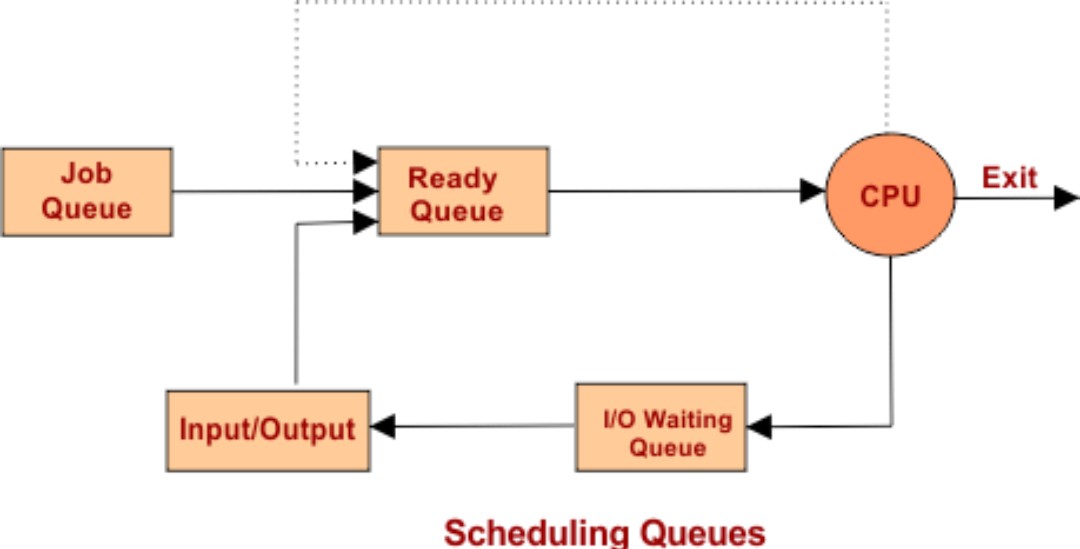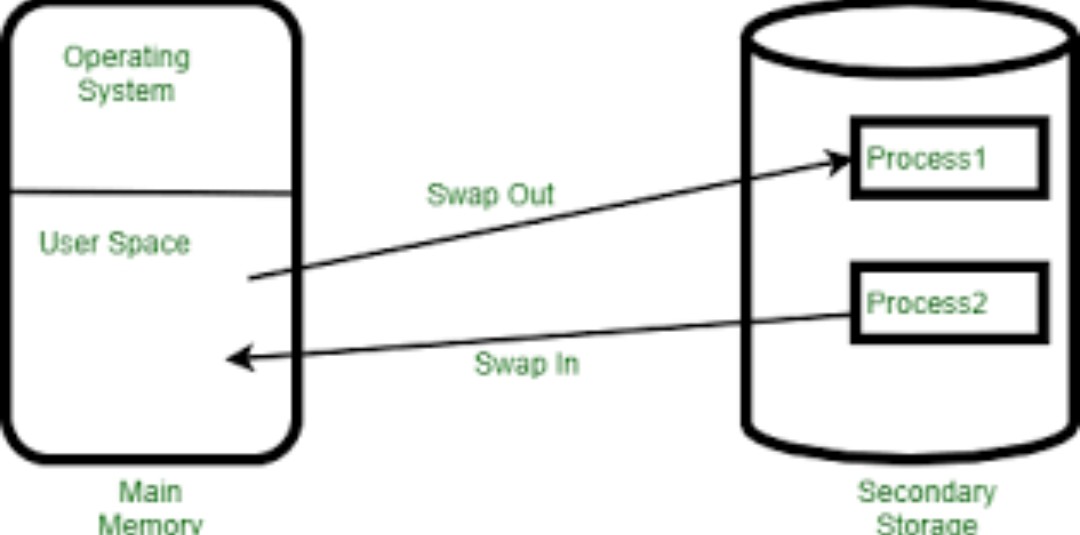Introduction
In computer science, understanding the functioning of an Operating System (OS) is important. One of the fundamental components of an OS is the Process Scheduler, which plays a role in managing system resources efficiently. In this guide, we will look into the world of Process Scheduling in Operating Systems. We will explore their significance, various scheduling algorithms, scheduler, and how they impact system performance and efficiency.
What is a Process?
A process, in the context of operating systems and computing, is a fundamental concept. It refers to a program in execution. In simpler terms, when you launch a software application or execute a script, it becomes a process running on your computer. Each process has its own memory space, program counter, and system resources, making it independent of other processes. Processes can perform tasks concurrently, allowing modern computer systems to multitask efficiently.
What is Process Scheduling?
Process Scheduling in Operating System(OS) is a crucial aspect of an Operating System. It involves the mechanism of selecting the next process to run from the ready queue or pool of processes in the system. This selection is made by the Process Scheduler, which aims to optimize CPU utilization and system responsiveness. Scheduling is a dynamic and continuous process, as the scheduler must adapt to the changing state of processes and system resources.
What is a Process Scheduler?
A Process Scheduler is a vital part of the Operating System responsible for allocating CPU time to processes. It ensures that the available CPU time is distributed among the processes efficiently, maximizing system utilization. Process scheduling is a dynamic process, and the scheduler continually makes decisions to manage the execution of multiple processes concurrently.
Significance of Process Schedulers
Process Schedulers are essential for several reasons:
1. Resource Allocation: They allocate system resources, such as CPU time, to various processes, ensuring that each process gets its fair share.
2. Priority Management: Schedulers prioritize processes, allowing critical tasks to be executed with higher precedence, thereby optimizing system responsiveness.
3. Fairness: They ensure fairness by preventing any single process from monopolizing system resources, which could lead to system instability.
4. Throughput: By efficiently managing CPU time, they enhance system throughput, enabling more tasks to be completed in less time.
Process Scheduling Queues

There are three types of process schedulers.
1. Long Term or Job Scheduler
It brings the new process to the ‘Ready State’. It controls the Degree of Multi-programming, i.e., the number of processes present in a ready state at any point in time. It is important that the long-term scheduler make a careful selection of both I/O and CPU-bound processes. I/O-bound tasks are which use much of their time in input and output operations while CPU-bound processes are which spend their time on the CPU. The job scheduler increases efficiency by maintaining a balance between the two. They operate at a high level and are typically used in batch-processing systems.
2. Short-Term or CPU Scheduler
It is responsible for selecting one process from the ready state for scheduling it on the running state. Note: Short-term scheduler only selects the process to schedule it doesn’t load the process on running. Here is when all the scheduling algorithms are used. The CPU scheduler is responsible for ensuring no starvation due to high burst time processes.The dispatcher is responsible for loading the process selected by the Short-term scheduler on the CPU (Ready to Running State) Context switching is done by the dispatcher only. A dispatcher does the following:
- Switching context.
- Switching to user mode.
- Jumping to the proper location in the newly loaded program.
Medium-Term Scheduler
It is responsible for suspending and resuming the process. It mainly does swapping (moving processes from main memory to disk and vice versa). Swapping may be necessary to improve the process mix or because a change in memory requirements has overcommitted available memory, requiring memory to be freed up. It is helpful in maintaining a perfect balance between the I/O bound and the CPU bound. It reduces the degree of multiprogramming.
Some Other types of process Schedulers
Process Scheduling in Operating System(OS) can also be classified into several types based on their functionality and purpose:
1. Batch Schedulers: These schedulers are responsible for managing batch processing systems, where tasks are executed without user interaction. They prioritize tasks based on criteria like job priority or submission time.
2. Interactive Schedulers: Interactive systems, such as desktop operating systems, rely on interactive schedulers. These schedulers focus on providing responsive user experiences.
3. Real-Time Schedulers: In real-time systems, tasks must meet strict timing constraints. Real-time schedulers ensure that critical tasks are executed within their deadlines.
4. Multi-Processor Schedulers: In systems with multiple CPUs or cores, these schedulers distribute processes across available processors to maximize throughput.
5. Foreground and Background Schedulers: These schedulers differentiate between foreground processes (user-initiated) and background processes (system-initiated).
Two-State Process Model
Understanding the Two-State Process Model is essential in Process Scheduling. It divides processes into two states:
- Running State: The process currently using the CPU.
- Non-Running State: Processes waiting for CPU time, which includes both those in the ready queue and the blocked queue.
This model simplifies scheduling decisions by focusing on these two states.
Schedulers and Context Switching
When the Process Scheduler switches between processes, it performs a Context Switch. This involves saving the current state of the running process and loading the state of the next process. Context switches add some overhead to the system, and optimizing them is crucial for efficient scheduling.
Context Switching
In order for a process execution to be continued from the same point at a later time, context switching is a mechanism to store and restore the state or context of a CPU in the Process Control block. A context switcher makes it possible for multiple processes to share a single CPU using this method. A multitasking operating system must include context switching among its features.

- Program Counter
- Scheduling information
- The base and limit register value
- Currently used register
- Changed State
- I/O State information
- Accounting information
The state of the currently running process is saved into the process control block when the scheduler switches the CPU from executing one process to another. The state used to set the PC, registers, etc. for the process that will run next is then loaded from its own PCB. After that, the second can start processing.
Read Also: Cache Memory in 21st century Computers
Some Other Schedulers
Apart from the main types of schedulers mentioned earlier, there are specialized schedulers used for specific purposes, such as:
1. I/O Schedulers: These manage the input and output operations, ensuring efficient data transfer between memory and I/O devices.
2. Memory Schedulers: Memory management in systems with multiple processors requires specialized memory schedulers to allocate memory resources effectively.
3. Network Schedulers: In distributed systems, network schedulers optimize data transfer and communication between nodes.
4. Task Schedulers: Task-based parallelism relies on task schedulers to manage the execution of tasks across multiple threads or processes.
Scheduling Algorithms
Some commonly used scheduling algorithms:
1. First-Come-First-Served (FCFS): FCFS is one of the simplest scheduling algorithms. It serves processes in the order they arrive in the ready queue. While it’s easy to implement, it may lead to the “convoy effect,” where a long process ahead of shorter ones delays their execution.
2. Shortest Job Next (SJN) or Shortest Job First (SJF): This algorithm prioritizes processes with the shortest execution time. It minimizes waiting time and ensures that smaller tasks are executed before longer ones. However, predicting execution times accurately can be challenging.
3. Round Robin (RR): RR assigns a fixed time slice (quantum) to each process in a circular manner. It provides fairness and prevents a single long-running process from hogging the CPU. However, it may introduce additional overhead due to context switches.
4. Priority Scheduling: In Priority Scheduling, each process is assigned a priority, and the scheduler selects the process with the highest priority to run. It’s effective for systems with varying levels of criticality among processes. However, if not carefully managed, it can lead to priority inversion or starvation.
5. Multi-Level Queue Scheduling: This scheduling algorithm divides the ready queue into multiple priority levels, each using its own scheduling algorithm. It’s suitable for systems with diverse workload requirements. For instance, real-time processes may have a higher priority queue, while batch jobs are placed in a lower priority queue.
6. Multi-Level Feedback Queue Scheduling: An extension of multi-level queue scheduling, this algorithm allows processes to move between queues based on their behavior. For example, a process that frequently uses CPU time may be downgraded to a lower priority queue to prevent resource hogging.
Impact on System Performance
The choice of a scheduling algorithm can significantly affect system performance. A poorly chosen algorithm can lead to issues like:
- CPU Starvation: Some processes may never get a chance to execute if a scheduling algorithm favors others.
- Inefficient Resource Usage: Certain algorithms may result in low CPU utilization, wasting system resources.
- Increased Response Time: Inefficient scheduling can lead to longer response times, affecting user experience.
- Complexity: Some advanced algorithms may introduce complexity, making the system harder to manage.
Optimizing Process Scheduling
To optimize process scheduling, it’s crucial to choose the right scheduling algorithm for your system’s specific needs. Factors to consider include:
- Workload: The type and characteristics of tasks your system handles.
- Resource Constraints: The available system resources, especially CPU cores.
- Response Time Requirements: Whether your system requires quick response times for interactive tasks.
- Predictability: The ability to estimate task execution times accurately.
- Fairness: Ensuring that no task is unfairly treated.
- Adaptability: The system’s ability to adjust scheduling based on changing conditions.
- Real-time Requirements: If your system must meet real-time deadlines.
Conclusion
Process scheduling is the activity of the process manager that handles the removal of the running process from the CPU and the selection of another process on the basis of a particular strategy.
Process scheduling is an essential part of a Multiprogramming operating system. Such operating systems allow more than one process to be loaded into the executable memory at a time and the loaded process shares the CPU using time multiplexing.
In this post of Process Scheduling in Operating Systems, we’ve discussed the significance of Process Schedulers, various scheduling algorithms, and their impact on system performance and responsiveness. From understanding Process Scheduling Queues to categories of scheduling and types of Process Schedulers, we’ve covered the essentials of this critical aspect of computer science.
